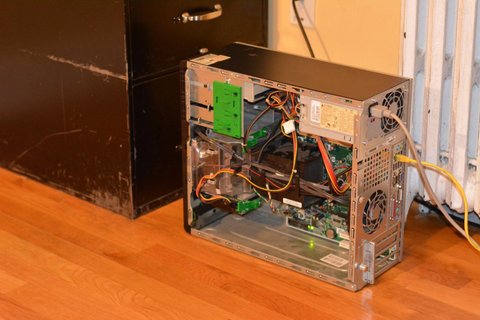Setting up a web server at home is a great way to learn more about how the Internet works, and it’s also a great way to share files with other people.
Setting up your own web server can be quite simple, depending on the type of operating system you’re using. Here are some instructions for setting up a web server on Linux and Mac OS X.
For Linux users, there are three main ways to set up a web server: Apache 2, Nginx and Lighttpd. Apache 2 is a very popular choice for Linux users because it’s been around for so long, but it has its limitations. Nginx is another popular option because it’s lightweight and fast. Lighttpd is an open source alternative to Apache that has many of the same features as Nginx.
For Mac OS X users, there are only two choices: Apache 2 or Nginx. Since Mac OS X already comes with Apache installed by default, there’s no need to install it yourself unless you want to use another version of the software or have some specific reason not to use the default version (for example, if you have some special needs).

Set Up A Web Server At Home
You can set up a web server on your home computer. This will allow you to host websites and web applications that can be accessed by anyone in the world.
In this tutorial, we will show you how to create a web server on Windows 10, Ubuntu Linux, macOS and Windows Server. We’ll also show you how to create a web server using Python.
How To Create A Web Server For Free
There are many ways to host your website for free, but if you want to make money from your site or need more features than what free hosting offers, then it’s best to use paid hosting services.
However, if you’re just starting out with your first website and don’t want to spend any money at all yet, there are still several ways for you to get started without spending any money:
Use a free hosting service – Several companies offer free hosting services where you can upload your files and access them from anywhere in the world by entering their domain name into the address bar of your browser (e.g., example.com). These services usually have limited storage space and bandwidth though, so they’re not ideal for large websites or applications that receive lots of traffic each day.
How to Create a Web Server on Windows 10 for Free
The following steps will help you create a web server on Windows 10. You will need to have administrator privileges on the machine you are using and have port 80 free.
Open Command Prompt as an administrator by pressing Win+X, selecting Command Prompt (Admin) from the menu, and clicking Yes when prompted.
Type the following command to open TCP port 80: netstat -b | findstr “LISTEN” > port80.txt && echo “server” >> port80.txt && netstat -an | findstr “listening” >> port80.txt
In the Command Prompt window, type ipconfig /all > ipconfig1.txt && copy /B ipconfig1.txt + ipconfig2.txt newport80server.bat && start newport80server.bat
Open Notepad and paste the contents of newport80server.bat into Notepad and save it as a .bat file (e.g., newport80server1.bat).
How to Create a Web Server at Home
You can create a web server for free, on any computer you have access to. Here’s how to do it on Windows, Linux and Mac.
The easiest way to create your own web server is by using the Apache 2.4 or 2.2 web server software (which is open source). You can download it from Apache’s website and install it on your computer. Once you’ve got Apache installed, you can start creating websites by creating files in your home directory with the .html extension.

To get started, you’ll need to know how to use FTP software or SFTP to upload files from your computer to the server’s home directory. If you’re using Windows, we recommend FileZilla; if you’re using Mac OS X, Cyberduck is a good choice; and if you’re using Linux, Nautilus will work well enough for now…
This article will help you to set up a web server at home.
A web server is a computer that hosts websites. It is usually connected to the internet, and it can be accessed by other computers using the Hypertext Transfer Protocol (HTTP). The main role of a web server is to store and deliver web pages to users’ browsers.
There are many different types of software that can be used as a web server, including Apache HTTP Server, Microsoft Internet Information Services (IIS) and NGINX.

Creating a Web Server At Home
If you want to create your own web server at home, then there are several options available:
Install Linux from scratch on your computer (this option requires some technical knowledge)
Install Linux on an emulator like Virtual Box or VMWare Player (this option requires less technical knowledge)
Setting up a web server is easy. You just need to set up a computer with internet access, install the right software and configure it to listen on a port.
In this tutorial we will demonstrate how to do this on Windows, Linux and macOS.
The first step is to decide which operating system you want to use as your web server. For the purposes of this tutorial, we will be using Windows 10, but if you already have another OS installed then that’s fine too.
To get started, open up an elevated command prompt by pressing Windows key + X and selecting Command Prompt (Admin) from the menu.
When the Command Prompt window opens, type: netsh advfirewall firewall add rule name=”Local Port” dir=in action=allow protocol=TCP localport=8080 remoteip=localsubnet
This command adds a firewall rule on Windows 10 allowing incoming connections on port 8080 from any IP address within your local subnet (192.168.*). The name parameter can be anything you like but it’s best not to use spaces in case you ever want to delete or modify this rule later on.
Now type ipconfig /all in the command prompt and look for something like 192
How to create a web server in python
In this tutorial you will learn how to create a web server in python. The main purpose of creating a web server is to host your website on the internet. In this article we will show you how to create a web server on Windows and Linux. We will also show you how to setup Python on Windows and Linux.

Free Web Hosting
Before starting, we recommend that you check out our list of free web hosting services. If you are looking for an affordable way to host your new website, then these services may be just what you need!
How to create a web server for free
1. Install Python 3.6 or later
2. Install Flask: $ pip3 install –user Flask
3. Create a file called “hello.py” and add the following code:
from flask import Flask, request
app = Flask(__name__)
@app.route(‘/’)
def hello():
return ‘Hello World’
How to Create a Web Server in Python
Python is a general-purpose programming language that is widely used by programmers to create web applications. There are many ways to create web servers with Python, but this guide will focus on the most basic approach: creating a simple HTTP server with Python’s built-in web module.
If you want to use Python to build a real website, check out our guide on building a static website with Python.
You can also check out our guide on building an application using the Flask microframework. Flask offers much of the same functionality as Django, but it’s intended for smaller sites and apps that don’t need all of Django’s features.
To create a web server you need:
Python 2.7 or above (Python 3 is not recommended)
Grid FTP Server (this is just an example, you can use any other FTP server)
A text editor (Notepad++, Sublime Text, Visual Studio Code etc.)
Let’s begin!
First of all, we are going to create a simple web server on Windows 10 using Python. For this purpose, I’m going to use the following software:
Python 2.7 or above (Python 3 is not recommended) – https://www.python.org/downloads/windows/
Grid FTP Server (this is just an example, you can use any other FTP server) – https://www.gridftp.com/ftp-server-download/
A text editor (Notepad++, Sublime Text, Visual Studio Code etc.) – https://notepad-plus-plus.org.
web server
A web server is a computer application that provides a set of one or more web services to other computers or devices. The term can also be used to refer to the computer on which the server software runs. The term web server may also be used to refer to a particular computer that hosts web applications, and this article will use this second meaning; however, it should be noted that the second meaning is not always true, as a single physical server can run multiple instances of its operating system (OS).
A web server is part of the client–server model, an architectural model in which a process requests a service (e.g., file storage) from another process that performs some action on behalf of the first process. Web servers are usually implemented using HTTP and sometimes HTTPS, where HTTP is the underlying protocol for transferring hypertext between clients and servers and HTTPS is a secure version of HTTP.
Web servers are responsible for receiving requests from users’ browsers, processing them according to various criteria (such as URI requested), and sending back responses. They are also frequently responsible for encryption and decryption of data sent via network connections, including securing communications with Secure Sockets Layer (SSL)/Transport Layer Security (TLS).